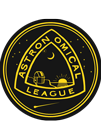STELLAR FOSSILS : Globular clusters as probes of the galaxy
Some of the finest objects to look at in the night sky are the globular star clusters --- gravitationally bound collections of tens to hundreds of thousands of stars. The first globular cluster was discovered by a German
amateur astronomer in 1665, fifty-five years after the invention of the astronomical telescope. Since then astronomers have been studying these magnificent systems in earnest, trying to understand their origin, composition and future.
The globular clusters harbor the oldest known stars in the Cosmos, suggesting they were among the first objects to form, making them useful tools to understand the nature of the early Universe. Most large galaxies have a significant collection of globular clusters orbiting them in a vast halo, making them useful probes of the galaxies themselves --- the Milky Way alone as more than 150 known globular clusters! Despite all we have learned over the years, there are still many mysteries to explore: do globular clusters hide black holes at their cores like their larger parent galaxies? why are the oldest known stars in globular clusters? how did the globular clusters form, and how did they become associated with the galaxies?
In this talk, we'll talk about how globular clusters are used as probes of the Milky Way galaxy, discuss some of the ideas about the history and evolution of the globular clusters, and take note of many of the interesting globular clusters that you can observe and study with your own telescopes.















